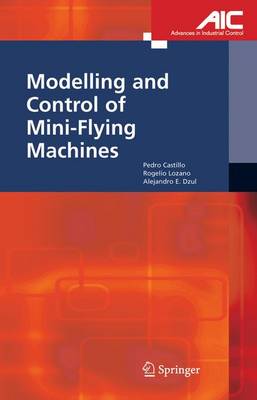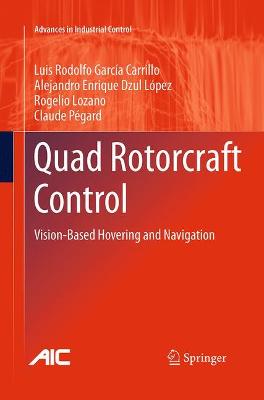Advances in Industrial Control
2 total works
Modelling and Control of Miniflying Machines
by Pedro Castillo, Rogelio Lozano, and Alejandro E Dzul
Modelling and Control of Mini-Flying Machines is an exposition of models developed to assist in the motion control of various types of mini-aircraft:
* Planar Vertical Take-off and Landing aircraft;
* helicopters;
* quadrotor mini-rotorcraft;
* other fixed-wing aircraft;
* blimps.
For each of these it propounds:
* detailed models derived from Euler-Lagrange methods;
* appropriate nonlinear control strategies and convergence properties;
* real-time experimental comparisons of the performance of control algorithms;
* review of the principal sensors, on-board electronics, real-time architecture and communications systems for mini-flying machine control, including discussion of their performance;
* detailed explanation of the use of the Kalman filter to flying machine localization.
To researchers and students in nonlinear control and its applications Modelling and Control of Mini-Flying Machines provides valuable insights to the application of real-time nonlinear techniques in an always challenging area.
Quad Rotorcraft Control
by Luis Rodolfo Garcia Carrillo, Alejandro Enrique Dzul Lopez, Rogelio Lozano, and Claude Pegard
The history, classification and applications of UAVs are introduced, followed by a description of modelling techniques for quad-rotors and the experimental platform itself. A control strategy for the improvement of attitude stabilization in quad-rotors is then proposed and tested in real-time experiments. The strategy, based on the use low-cost components and with experimentally-established robustness, avoids drift in the UAV's angular position by the addition of an internal control loop to each electronic speed controller ensuring that, during hovering flight, all four motors turn at almost the same speed. The quad-rotor's Euler angles being very close to the origin, other sensors like GPS or image-sensing equipment can be incorporated to perform autonomous positioning or trajectory-tracking tasks.
Two vision-based strategies, each designed to deal with a specific kind of mission, are introduced and separately tested. The first stabilizes the quad-rotor over a landing pad on the ground; it extracts the 3-dimensional position using homography estimation and derives translational velocity by optical flow calculation. The second combines colour-extraction and line-detection algorithms to control the quad-rotor's 3-dimensional position and achieves forward velocity regulation during a road-following task.
In order to estimate the translational-dynamical characteristics of the quad-rotor (relative position and translational velocity) as they evolve within a building or other unstructured, GPS-deprived environment, imaging, inertial and altitude sensors are combined in a state observer.
The text give the reader a current view of the problems encountered in UAV control, specifically those relating to quad-rotor flying machines and it will interest researchers and graduate students working in that field. The vision-based control strategies presented help the reader to a better understanding of how an imaging system can be used to obtain the information required for performance of the hovering and navigation tasks ubiquitous in rotored UAV operation.

